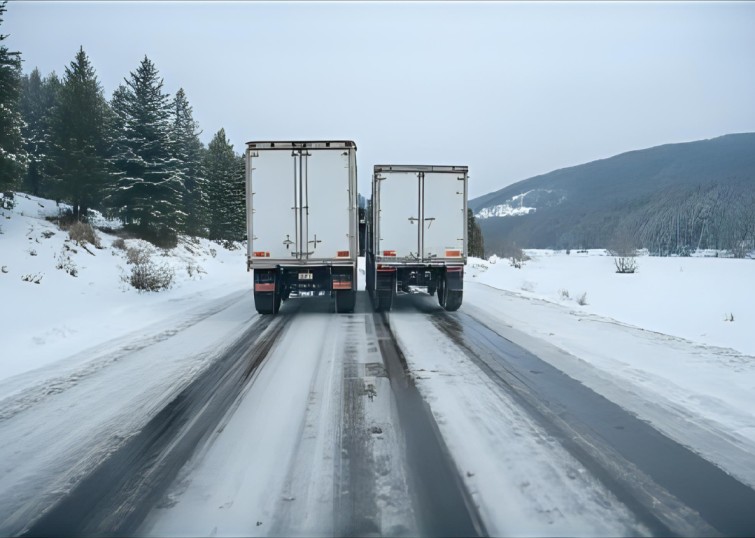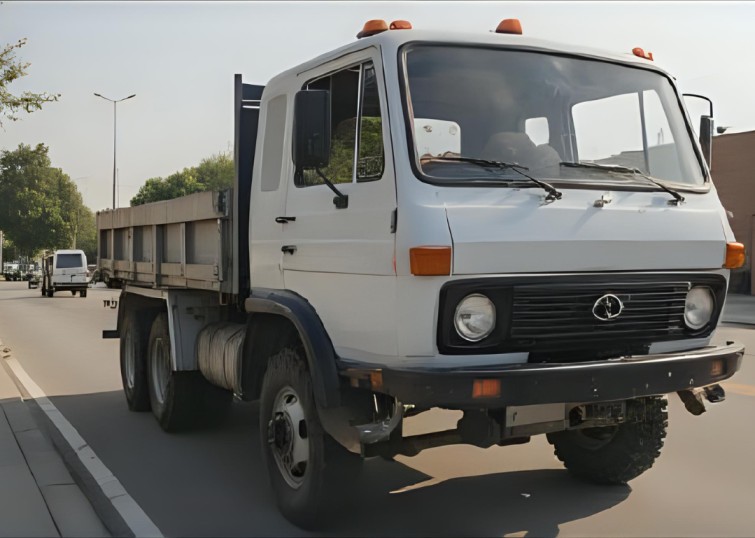TL;DR
Comparative fault determines how responsibility is shared between parties involved in delivery truck collisions. By assessing each party’s contribution to the accident, it influences the compensation each can receive. Understanding comparative fault helps victims navigate legal claims and ensures fair distribution of liability.
Key Highlights
- Shared Responsibility: Determines how blame is divided between the delivery truck driver and other parties.
- Impact on Compensation: Influences the amount of damages each party can claim based on their degree of fault.
- Legal Framework: Governed by state laws that vary in how they apply comparative fault principles.
- Evidence Evaluation: Involves analyzing factors like driver behavior, road conditions, and vehicle maintenance.
- Claim Process: Affected by comparative fault, impacting negotiations and court outcomes.
- Preventive Measures: Understanding fault allocation can help in adopting strategies to reduce collision risks.

Delivery truck collisions have become increasingly common on U.S. roadways, with the National Highway Traffic Safety Administration (NHTSA) reporting over 5,700 fatalities involving large trucks in 2022, a number that has steadily risen over the last decade. In densely populated regions and high-volume commercial corridors such as those found in Atlanta and across Georgia, the influx of Amazon, UPS, FedEx, and third-party gig delivery drivers has significantly raised the risk of severe injury and death from truck-related crashes. The legal aftermath of these incidents often involves complex determinations of who was at fault—and to what degree.
Georgia operates under a modified comparative fault rule, codified in O.C.G.A. § 51-12-33, which allows a plaintiff to recover damages only if they are found to be less than 50% at fault for the accident. In multi-vehicle truck collisions, this means that responsibility may be divided among the truck driver, delivery company, other motorists, or even local governments and maintenance contractors. Understanding how fault is distributed and how it affects compensation is essential for anyone injured in a delivery truck crash seeking to pursue a legal claim in Georgia.
Understanding Georgia’s Modified Comparative Fault Law
In Georgia, the law recognizes that more than one party can share responsibility for causing an accident. The state’s modified comparative fault rule dictates that:
- A plaintiff (the injured party) can recover damages only if they are found to be less than 50% at fault for the collision.
- If the plaintiff’s fault is 50% or more, they cannot recover any damages.
- If the plaintiff is less than 50% at fault, the total damages awarded are reduced by their percentage of fault.
For example, if a plaintiff is awarded $200,000 but found to be 30% at fault, the compensation would be reduced by 30%, resulting in a $140,000 payout.
This law aims to balance fairness by holding each party accountable according to their level of responsibility. However, it also means that victims must be careful to avoid being assigned equal or greater fault, which would bar them from recovering compensation.
Parties Potentially Liable in Delivery Truck Collisions
Determining fault in delivery truck crashes often involves examining the conduct of multiple parties:
1. Delivery Truck Drivers
Truck drivers are responsible for safely operating their vehicles according to traffic laws and company policies. Negligent behavior by drivers can include:
- Speeding or driving aggressively to meet tight delivery schedules.
- Driving while fatigued, which impairs reaction times.
- Distracted driving, such as texting or using GPS while behind the wheel.
- Failure to obey traffic signs or signals, leading to collisions.
- Improper lane changes or turns.
If a driver’s negligence causes or contributes to the accident, they may be held liable for damages.
2. Other Motorists Involved
Other drivers involved in the collision may share fault if their actions contributed to the crash. Examples include:
- Cutting off a delivery truck.
- Running red lights or stop signs.
- Tailgating or aggressive driving.
- Distracted driving.
Fault may be divided among all parties based on their level of carelessness or violation of traffic laws.
3. Delivery Companies (Employers)
Employers can be held vicariously liable for the negligent acts of their employees under respondeat superior, which holds an employer responsible for employees’ actions within the scope of employment.
Beyond vicarious liability, companies may face direct liability for:
- Negligent hiring (employing unqualified or unfit drivers).
- Inadequate training or supervision.
- Imposing unrealistic delivery deadlines that encourage unsafe driving.
- Failure to maintain vehicles properly.
- Violating federal or state safety regulations.
Delivery companies often have significant financial resources and insurance coverage, making them important targets for claims.
4. Independent Contractors
Some delivery companies contract independent drivers rather than employing them directly. Liability in these cases depends on the level of control the company exercises over the contractor. Courts will evaluate factors like:
- Who sets delivery schedules?
- Who provides vehicles and equipment?
- The nature of the contractual agreement.
If the company is found to exert sufficient control, it may be liable for the contractor’s negligence.
5. Vehicle Manufacturers and Maintenance Providers
In some crashes, mechanical failure plays a role. Fault may lie with:
- Manufacturers, if a vehicle or component is defective.
- Maintenance providers, if poor repairs or lack of upkeep contributed.
Examples include faulty brakes, tire blowouts, or steering malfunctions.
How Fault is Determined in Delivery Truck Accidents
Determining fault is a detailed process involving the collection and analysis of evidence, including:
- Police Reports: Initial documentation of the accident, citations, and witness statements.
- Eyewitness Testimonies: Observations from people who saw the crash.
- Surveillance or Traffic Cameras: Video footage capturing the incident.
- Accident Reconstruction Experts: Professionals who analyze vehicle positions, speeds, and damage to recreate the crash.
- Medical Records: To understand injuries and causation.
- Electronic Logging Devices (ELDs): Truck driver records that track hours driven and rest breaks.
This evidence is used to establish how the crash occurred and assign fault percentages to each party.
The Impact of Comparative Fault on Compensation
Once fault percentages are assigned, Georgia’s comparative fault rule impacts the amount of compensation:
- If the injured party is found 10% at fault, their damages award is reduced by 10%.
- If they are 49% at fault, they still recover 51% of their damages.
- If they are 50% or more at fault, they recover nothing.
Compensation can include:
- Medical expenses (past and future).
- Lost wages and loss of earning capacity.
- Pain and suffering.
- Property damage.
- Wrongful death damages if a loved one died.
Understanding this system highlights the importance of minimizing fault percentages to maximize recovery.
Comparative Fault and Settlement Negotiations
In many cases, delivery truck accident claims are resolved through settlements rather than trial. Comparative fault influences settlement amounts and negotiations because:
- Insurance companies will argue for higher fault percentages on plaintiffs to reduce payouts.
- Plaintiffs’ attorneys strive to reduce client fault to preserve full recovery.
- Both sides often negotiate fault percentages as part of settlement discussions.
A skilled delivery truck accident attorney can use evidence and expert testimony to advocate for a fair fault allocation.
Challenges in Comparative Fault Cases Involving Delivery Trucks
Several factors make these cases particularly challenging:
- Multiple Defendants: Cases often involve drivers, employers, contractors, and manufacturers.
- Complex Liability Theories: Both direct and vicarious liability claims may apply.
- Corporate Defense Teams: Large delivery companies have experienced legal and insurance defense.
- Fault Apportionment Disputes: Differing accounts and evidence can complicate fault assignment.
Because of these complexities, expert legal representation is essential to protect your rights.
Steps to Take If You Are Involved in a Delivery Truck Collision
1. Seek Immediate Medical Attention
Your health and safety are paramount. Even if injuries seem minor, see a doctor promptly.
2. Report the Accident
Notify law enforcement to create an official accident report. This document is critical evidence.
3. Gather Evidence
If safe, document the scene with photos and videos. Collect contact information of witnesses.
4. Preserve Records
Keep copies of all medical records, repair estimates, and correspondence related to the accident.
5. Contact an Experienced Attorney
Consult an atlanta truck accident lawyer experienced in delivery truck collisions to discuss your case and rights.
Conclusion
Delivery truck collisions involve complex liability issues, often requiring a nuanced understanding of Georgia’s comparative fault law. This legal framework assigns responsibility proportionally, which directly affects the compensation victims may receive. Whether the fault lies with the delivery truck driver, the company, other motorists, or vehicle manufacturers, each party’s role must be carefully evaluated.
Navigating these cases demands thorough investigation, expert analysis, and skilled advocacy to ensure fault is fairly assigned and victims obtain the compensation they deserve. If you or a loved one has been injured in a delivery truck accident, do not delay in seeking legal counsel.
Contact us for a free consultation today. Our dedicated legal team will review your case, help gather critical evidence, and fight for your rights to compensation and justice. With knowledgeable guidance, you can confidently take the next step toward recovery and closure.



